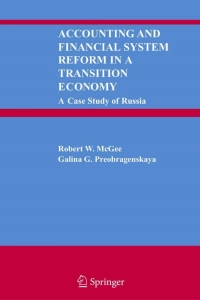Answered step by step
Verified Expert Solution
Question
1 Approved Answer
Arena Corporation manufactures one product. It does not maintain any beginning or ending Work in Process inventories. The company uses a standard cost system in
Arena Corporation manufactures one product. It does not maintain any beginning or ending Work in Process inventories. The company uses a standard cost system in which inventories are recorded at their standard costs and any variances are closed directly to Cost of Goods Sold. There is no variable manufacturing overhead.
The standard cost card for the companys only product is as follows:
Inputs Standard Quantity
or Hours Standard Price or Rate Standard Cost
Direct materials 1.2 pounds $ 5.50 per pound $ 6.60
Direct labor 0.90 hours $ 21.00 per hour 18.90
Fixed manufacturing overhead 0.90 hours $ 4.50 per hour 4.05
Total standard cost per unit $ 29.55
The standard fixed manufacturing overhead rate was based on budgeted fixed manufacturing overhead of $81,000 and budgeted activity of 18,000 hours.
During the year, the company completed the following transactions:
Purchased 35,400 pounds of raw material at a price of $4.60 per pound.
Used 32,180 pounds of the raw material to produce 26,900 units of work in process.
Assigned direct labor costs to work in process. The direct labor workers (who were paid in cash) worked 23,810 hours at an average cost of $20.60 per hour.
Applied fixed overhead to the 26,900 units in work in process inventory using the predetermined overhead rate multiplied by the number of direct labor-hours allowed. Actual fixed overhead costs for the year were $67,800. Of this total, $3,800 related to items such as insurance, utilities, and indirect labor salaries that were all paid in cash and $64,000 related to depreciation of manufacturing equipment.
Completed and transferred 26,900 units from work in process to finished goods.
Sold (for cash) 27,100 units to customers at a price of $36.60 per unit.
Transferred the standard cost associated with the 27,100 units sold from finished goods to cost of goods sold.
Paid $149,000 of selling and administrative expenses.
Closed all standard cost variances to cost of goods sold.
The company calculated the following variances for the year:
Materials price variance $ 31,860 F
Materials quantity variance $ 550 F
Labor rate variance $ 9,524 F
Labor efficiency variance $ 8,400 F
Fixed manufacturing overhead budget variance $ 13,200 F
Fixed manufacturing overhead volume variance $ 27,945 F
To answer the following questions, you will need to record transactions a through i in the worksheet below. This worksheet is similar to the worksheets in your text except that it has been split into two parts to fit on the page. PP&E (net) stands for Property, Plant, and Equipment net of depreciation.
Cash Raw Materials Work in Process Finished Goods PP&E (net) = Materials Price Variance Materials Quantity Variance Labor Rate Variance Labor Efficiency Variance FOH Budget Variance FOH Volume Variance Retained Earnings
1/1 $1,200,000 $29,700 $0 $70,920 $505,400 = $0 $0 $0 $0 $0 $0 $1,806,020
a. =
b. =
c. =
d. =
e. =
f. =
g. =
h. =
i. =
12/31 =
The ending balance in the Work in Process account will be closest to:
Multiple Choice
$794,895
$685,950
$0
$177,540
Step by Step Solution
There are 3 Steps involved in it
Step: 1

Get Instant Access to Expert-Tailored Solutions
See step-by-step solutions with expert insights and AI powered tools for academic success
Step: 2

Step: 3

Ace Your Homework with AI
Get the answers you need in no time with our AI-driven, step-by-step assistance
Get Started


